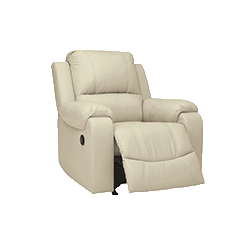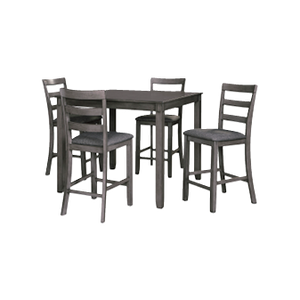One of the most exciting challenges in creating a stylish and cohesive space is mixing furniture wood tones with finesse. At Ashley, we understand the significance of this art, as it plays a vital role in elevating the overall aesthetics of any room. In this blog post, we'll share expert tips and tricks on how to master the art of mixing furniture wood tones like a pro.
How to Mix Wood Tones in Your Home
Embrace the Power of Neutrals
Before we dive into the specifics of wood tones and the art of blending them effortlessly, it's essential to first emphasize the profound importance of neutrals in interior design. Think of a neutral colour palette as the fundamental building block that lays the foundation for a harmonious and balanced space.
Neutrals serve as the calming backdrop, allowing your carefully curated mixed wood furniture pieces to take centre stage and shine with their inherent beauty. By incorporating soft and soothing hues like shades of beige, ivory, or greys, you create a versatile canvas that acts as a blank slate for your creative vision.
Neutral walls provide a serene backdrop, while neutral rugs add texture and warmth underfoot, and neutral upholstery ensures that your furniture becomes a timeless investment, effortlessly blending with any future decor changes. Moreover, the understated elegance of neutrals allows you to experiment boldly with various wood tones without overwhelming the senses, striking a delicate balance between visual interest and a tranquil environment.
Choose a Dominant Wood Tone
Every design scheme needs an anchor, and in the case of mixing wood tones, it's essential to select a dominant wood tone. This will be the primary wood colour that stands out in the room and sets the tone for the rest of your decor. For instance, if your dominant wood tone is a rich mahogany, you can build around it by incorporating lighter or darker wood tones to complement its richness.
Create Depth with Contrasting Tones
Contrast is undeniably the key to infusing your space with depth and visual intrigue. While having a dominant wood tone is crucial, don't shy away from incorporating contrasting wood hues. A brilliant example is pairing the richness of dark oak with the light allure of maple; the resulting striking and balanced look adds an air of sophistication to your room. This clever interplay of wood tones not only highlights individual furniture pieces but also keeps the eye constantly engaged, wandering through the space to explore every exquisite detail.
Mindful Placement of Wood Tones
Strategic placement of different wood tones can significantly impact your room's aesthetics. To maintain a balanced look, try distributing various wood pieces evenly across the space. For example, if you have a dark wood dining table, consider adding lighter wood chairs or a buffet to maintain harmony. By doing so, you create a pleasing contrast that adds visual interest without overwhelming the eye. This thoughtful arrangement allows each wood tone to stand out and contribute to the overall design cohesively, resulting in a space that feels well-curated and inviting.
Bridge the Gap with Transitional Pieces
Transitional pieces can work wonders when merging different wood tones. These are furniture items that incorporate multiple wood tones within a single piece, acting as a bridge between various elements in the room. Look for pieces like mixed-wood coffee tables or cabinets that blend seamlessly with your chosen dominant tone.
Play with Textures and Finishes
As you venture into the exciting world of mixing wood tones, keep in mind that perfection in matching is not the ultimate goal. The real beauty lies in embracing the diversity of wood tones and celebrating their individuality. Let your decor exude charm and personality by incorporating a variety of textures and finishes. Blend polished surfaces with distressed or rough finishes to create an eclectic and inviting ambiance that captivates the senses. The result will be a visually intriguing space that reflects your unique style and creates a welcoming atmosphere for all who enter.
Introduce Non-Wood Elements
To add further dimension to your space and achieve a seamless fusion of wood tones, consider introducing elements made from different materials such as metal, glass, or stone. These non-wood elements act as excellent neutralizers, creating a cohesive link that ties together the diverse wood tones in your room. For example, a metal-framed coffee table paired with mixed wood furniture adds a touch of contemporary elegance, while a glass accent piece allows the beauty of wood grain to shine through, adding visual interest. The addition of stone elements, like a granite-topped side table, introduces an organic grounding that complements the warmth of wood tones. By incorporating these diverse materials strategically, you can create a well-balanced and captivating interior that showcases your design prowess.
Incorporating a mix of wood tones into your home's decor can seem daunting, but with a thoughtful approach and some expert guidance, it becomes an exciting and rewarding design endeavor. By embracing neutrals, selecting a dominant wood tone, incorporating contrasting pieces, and playing with textures, you'll master the art of mixing furniture wood tones like a true interior design professional.






















